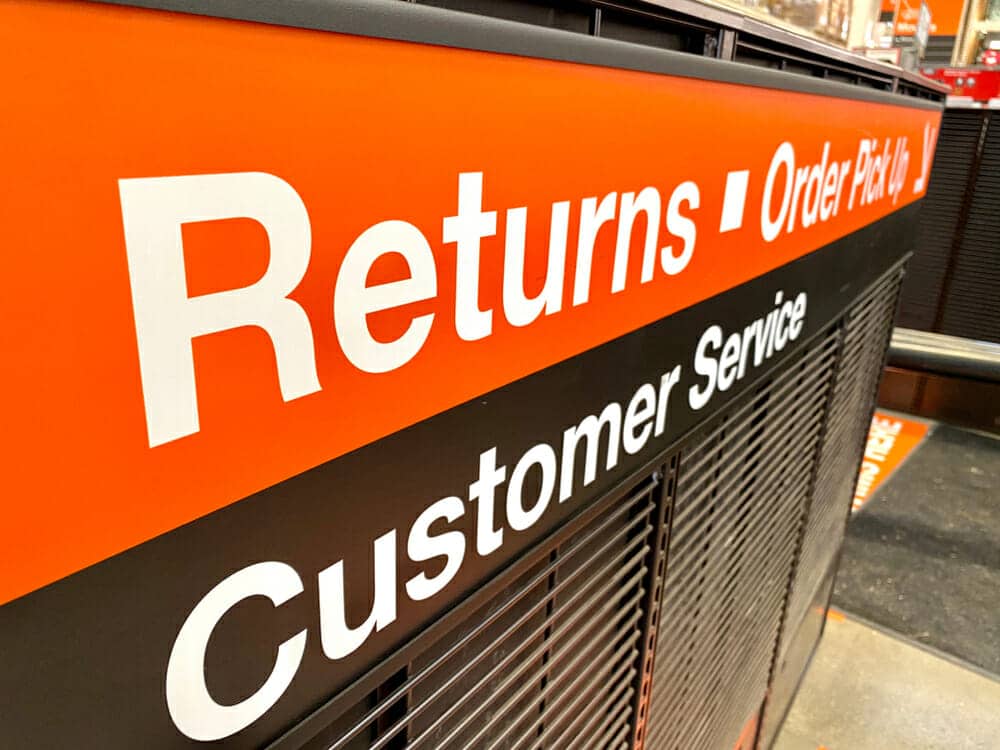Insight / Blog
Customers want to return in stores, so why not make it easy?

Returns are essential to customer loyalty – I’ve already written about how frustrating it is to go through most returns processes, and we know that 95% of shoppers will shop again at retailers where they have an easy and positive returns experience. It turns out that one of the most immediate ways to improve the returns experience is to make sure that ecommerce returns can be sorted out in stores.
What consumers want
The numbers are clear. A massive 84% of shoppers want to have the option to return their ecommerce purchases in store, and according to UPS, US shoppers are more likely to prefer in-store returns to shipping a parcel back (by 58% to 42%). However, more shoppers have actually shipped parcels back to retailers than returned in store – perhaps because they aren’t being made aware of the options, perhaps because the option isn’t always there.
To put it bluntly, this is crazy. As a retailer, you want people in your stores. You pay a huge amount to Google and other acquisition channels to get someone who looks like they might be willing to buy something from you to come to your website. But when someone (who is already a customer!) actively wants to come into your store and receive a service from you, you might not even be able to help them with their return? Or if you are able to do returns instore, your customers might not even know about it. Sounds like money left on the table to me.
To prove the point, UPS also showed that 34% of shoppers who preferred instore returns did so because they wanted to exchange their item, not just return it. The other big reasons are speed (both of the return and the refund) and cost – people hate to pay for returns. In store returns are a good way to incentivize a profitable behavior (visiting your store) in exchange for forgiving a restocking or return shipping fee. Arguably those fees are a bad idea for customer loyalty anyway, but that’s another story.
Knitting together instore and online
One of the challenges I hear about from retailers is connecting the pieces of the return experience together. Right now, everything happens in its own little box and information doesn’t get transferred between stages – so you have retailers who don’t know that something is being returned until it turns up at the warehouse or the sorting center.
What they need is a way to have a single cohesive returns experience that includes all the different options like instore returns or like the label-less or package-less returns offered by Amazon. Managing that experience all in one place and making sure that information actually flows through the system gives retailers a clear picture of what’s happening and what their customers want and need.
Imagine running marketing for a retailer, and not having your paid search campaign connected to your website. You wouldn’t do it – spending all that money to drive traffic and then not knowing what happens with it would be crazy. Yet that’s how returns work right now. Retailers take the financial hit from returns but don’t pay any attention to the impacts the process has on consumer behavior. Having a single returns platform which connects customer data, order data, communications and information about their returns should be an essential part of modern retailing operations.
That platform isn’t just a digital-only tool though – it should fold in offline interactions and make it easy for customers to book (and for staff to accept) returns in stores.
Selling the store experience
As an omnichannel retailer, stores are your biggest differentiator to pureplays – so it makes sense to advertise their capabilities in your returns journey. We already know that customers prefer to return to stores, but end up shipping items back more often – that is likely because at the moment of dealing with their return, their attention is not drawn to the option of the store. They make a decision quickly without thinking too much about it and end up doing the same habitual thing. Retailers need to intervene in this process to make customers aware of the option to use stores, and given that customers prefer this option anyway, it’s like they’re fighting a downhill battle.
The easiest way to draw customers attention to the instore option is to have it highlighted in the digital returns journey as the first, default option. Showing a map of local stores helps customers see where the most convenient location for them is, and if this is the default customer journey you offer, uptake will drastically increase.
Another opportunity is to use comms in the return journey to highlight the ease of exchanges and instant refunds in stores, two key benefits customers love. When a customer starts their return, you should look to capture return reason and also offer an exchange before they confirm that they just want to get rid of the item entirely.
Implementing these changes might seem like a huge piece of work, but in reality all of these options flow from having that single digital returns journey mapped out and managed on your returns platform.
Topics:
Related articles
How 3PLs Can Cut Costs, Reduce Waste and Boost Revenue With Smart Returns Management
3PLs should take advantage of returns to help reduce cost, efficiently manage warehouse resources, and aid growth.
Saving profits and the planet: 4 ways to sustainable & cost-effective returns
Returns drain profits and damage sustainability. Luckily, retailers can implement both cost-effective and sustainable returns using these 4 ways.
Speedy refunds: creating happy customers through fast & effective returns
Find out how speedy refunds can recapture revenue, increase customer loyalty and boost lifetime value.











